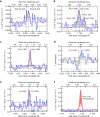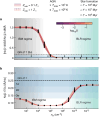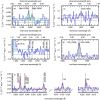A small and vigorous black hole in the early Universe
- PMID: 38232944
- PMCID: PMC10917688
- DOI: 10.1038/s41586-024-07052-5
A small and vigorous black hole in the early Universe
Erratum in
-
Author Correction: A small and vigorous black hole in the early Universe.Nature. 2024 Jun;630(8015):E2. doi: 10.1038/s41586-024-07494-x. Nature. 2024. PMID: 38760465 Free PMC article. No abstract available.
Abstract
Several theories have been proposed to describe the formation of black hole seeds in the early Universe and to explain the emergence of very massive black holes observed in the first thousand million years after the Big Bang1-3. Models consider different seeding and accretion scenarios4-7, which require the detection and characterization of black holes in the first few hundred million years after the Big Bang to be validated. Here we present an extensive analysis of the JWST-NIRSpec spectrum of GN-z11, an exceptionally luminous galaxy at z = 10.6, revealing the detection of the [NeIV]λ2423 and CII*λ1335 transitions (typical of active galactic nuclei), as well as semi-forbidden nebular lines tracing gas densities higher than 109 cm-3, typical of the broad line region of active galactic nuclei. These spectral features indicate that GN-z11 hosts an accreting black hole. The spectrum also reveals a deep and blueshifted CIVλ1549 absorption trough, tracing an outflow with velocity 800-1,000 km s-1, probably driven by the active galactic nucleus. Assuming local virial relations, we derive a black hole mass of , accreting at about five times the Eddington rate. These properties are consistent with both heavy seeds scenarios and scenarios considering intermediate and light seeds experiencing episodic super-Eddington phases. Our finding explains the high luminosity of GN-z11 and can also provide an explanation for its exceptionally high nitrogen abundance.
© 2024. The Author(s).
Conflict of interest statement
The authors declare no competing interests.
Figures









References
-
- Inayoshi K, Visbal E, Haiman Z. The assembly of the first massive black holes. Annu. Rev. Astron. Astrophys. 2020;58:27–97. doi: 10.1146/annurev-astro-120419-014455. - DOI
-
- Fan X, Bañados E, Simcoe RA. Quasars and the intergalactic medium at cosmic dawn. Annu. Rev. Astron. Astrophys. 2023;61:373–426. doi: 10.1146/annurev-astro-052920-102455. - DOI
-
- Volonteri M, Habouzit M, Colpi M. What if young z > 9 JWST galaxies hosted massive black holes? Mon. Not. R. Astron. Soc. 2023;521:241–250. doi: 10.1093/mnras/stad499. - DOI
-
- Trinca A, et al. The low-end of the black hole mass function at cosmic dawn. Mon. Not. R. Astron. Soc. 2022;511:616–640. doi: 10.1093/mnras/stac062. - DOI
-
- Banik N, Tan JC, Monaco P. The formation of supermassive black holes from Population III.1 seeds. I. Cosmic formation histories and clustering properties. Mon. Not. R. Astron. Soc. 2019;483:3592–3606. doi: 10.1093/mnras/sty3298. - DOI
LinkOut - more resources
Full Text Sources

